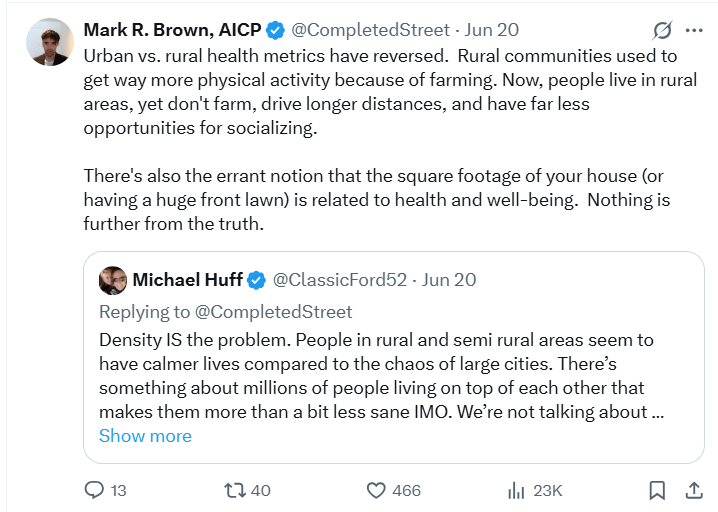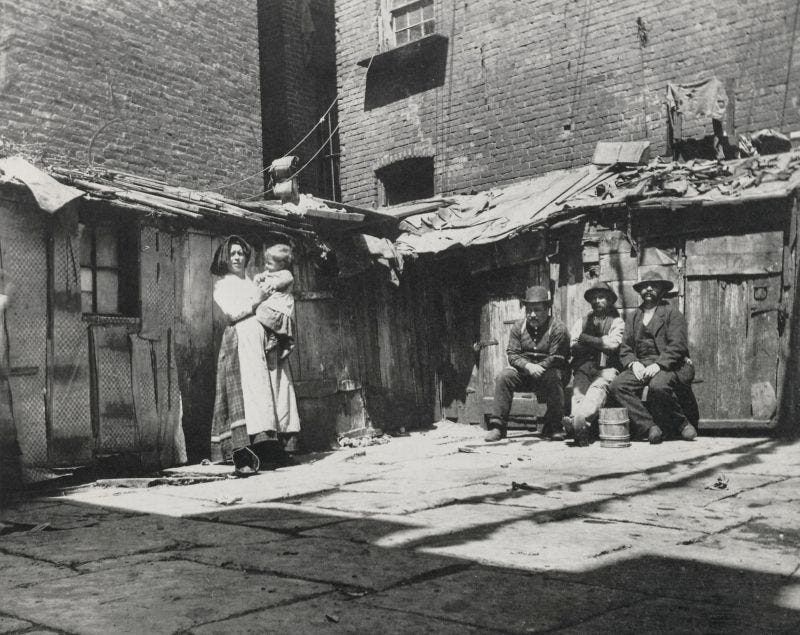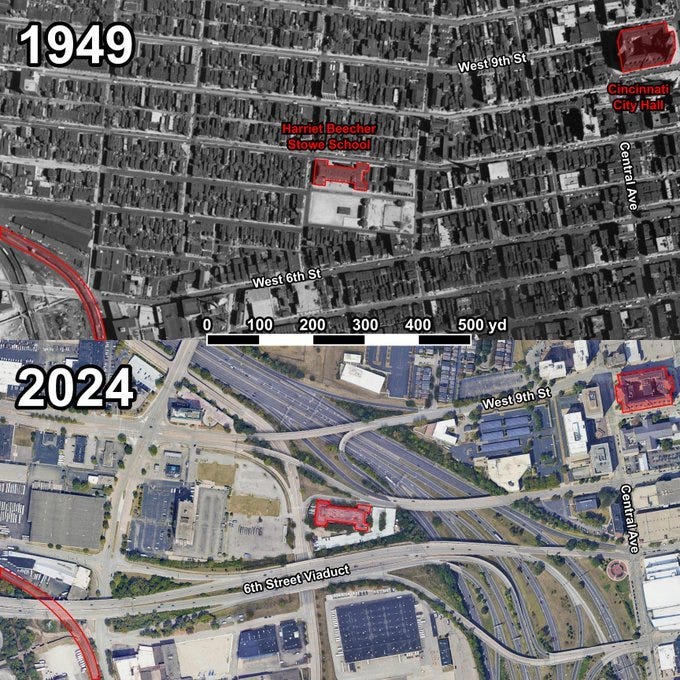I got a response about rural life on X the other day and it got me thinking. Rural lifestyles are still romanticized, especially in America. Amber waves of grain, acres of land all to yourself, dirt roads out to the horizon, private farms where you can grow your own food, peace and quiet. I did a short stint in rural Tennessee, so I understand the attraction. Are these images accurate, though? Is the rural life actually healthier than living in cities?
Farms were the cornerstone of rural towns for thousands of years. Spend all day outside under the sun, working the land until supper, which consisted of a homemade dinner sourced from your very own farm. Big families meant that people had large, in-person social networks. Families usually stayed intact and didn’t move far from where they grew up. Constant physical activity and healthy food meant that people who lived in the country were far healthier than city dwellers. Especially given that cities (up until the 20th century) were sources of disease, pollution, over-crowding and general misery.
But things have changed. Farming is far less physically demanding now. Modern farming relies on advanced machinery like tractors, combine harvesters, automated milking systems, and GPS-guided equipment. Tasks that once took days, such as harvesting a field, can now be completed in hours with minimal physical effort. For example, a combine harvester can process 150–200 acres of crops per day compared to hand-harvesting 1–2 acres daily 100 years ago. Also, go to any suburb of any mid-sized or large city and you’ll see former farms converted into subdivisions. What many people call “the country” is actually the suburbs. Sprawl, arterial roads, large front lawns and mini-castles have replaced productive farmland.
This means that people who live in rural areas no longer have the healthy lifestyle of farmers. They’re far less physically active because they’re driving longer distances. They have less access to health care. Fewer opportunities for in-person social events. Smaller, more dispersed families mean that people are lonelier. There’s less access to higher paying jobs. Less access to quality, in-person education. It’s even harder to find healthy food in a lot of rural communities that don’t have actual farms nearby. The urban-rural health divide has completely flipped. The CDC even has a webpage dedicated to the poor health outcomes of rural communities.
Anecdotally, I see this trend reflected in my friends and family. I notice that people who live in far off suburbs or very small towns are generally less healthy than the people I know who live in bigger cities. A family member who lives in rural Pennsylvania mentioned that the doctors in her area told her to visit doctors in Philadelphia or NJ instead if she wanted better care.
This isn’t only due to poverty and declining health of rural areas, but the increasing amenities and job opportunities of big cities. Cities have become better places to live over the past 40 years, with new mixed use districts and revitalized downtowns putting almost everything one would need within a few miles of their home. Cities have become hubs for higher paying jobs, quality medical care, physical activity opportunities, entertainment, and entrepreneurship. A 2020 Brookings Institution study analyzing 100 metro areas found that downtowns in metros with over 1 million people grew significantly faster than their surrounding counties from 2000 to 2018. On average, downtown populations in these metros increased by approximately 10–15% over this period, compared to metro-wide growth of around 5–7%. From 2005 to 2023, urban areas added 15 million jobs in the U.S. Many cities have prioritized walkability, green spaces, and healthy living campaigns as well, reducing obesity (28.7% in urban vs. 34.2% in rural areas) and improving mental health outcomes. Likewise, urban parks increased by 10% in major cities from 2005 to 2020, creating open spaces for leisure and social events. 70% of U.S. cities with populations over 500,000 have also added transit lines since 2005. Our cities are improving on almost every level.
But the mental images of urban overcrowding and “living in a pod” still persist for a lot of people, which is amazing given that a lot of newer apartments and condos in cities have amenities that rival what one could find in a single family detached home. Granted, some people will never want to share a wall with a neighbor, and I understand that. There’s plenty of housing product that meets that need. But there’s also a deep-rooted bias against cities in America, as our urban golden age happened more than 100 years ago with the Beaux-Arts movement and eventually faded with Art Deco of the 1930s and 40s. After that, it was a slow decline for the next 60 years with errant urban renewal schemes and federally funded interstates that destroyed waterfronts, walkable neighborhoods and minority communities. The “urban living” brand really took a hit between the 1960s and early 2000s.
I believe we are entering a new era, though. Cities, especially their urban cores, will continue to densify and grow. Jobs, medical facilities and new schools will continue to gravitate to where people are moving to. Hopefully, better transit and autonomous vehicles will improve rural access to our cities, increasing the quality of life for communities that have been declining for decades. And maybe the stereotypes of “living in a pod” will gradually fade as America develops what the rest of the world already has: Great cities.








*City* is a problematic word. Data cited for *cities* are often *metro* data, implying that central cities are combined into a silo with suburbs. Most sensibly, the contrasting data are more accurately *metro* and *non-metro*.
Regarding your main point, which we could call the problem of *rural identity*, rural people imagine themselves as being connected to the land as their rural forebearers were, and this is obviously a false self-perception. I often joke the the average rural resident works at the Wal-Mart in Shelbyville. In some sense, rural residents live like suburbanites: they commute long distances and they car dependent as suburbanites are. The big dividing lines between rural residents and suburbanites are the range of economic opportunities and consumer choices. There is no reason that people in rural regions could not re-organize themselves into small-scale urban settlements as most non-farmers did in the past. That would solve a few of their problems.
Question: how much do rural residents drive compared to suburban residents?